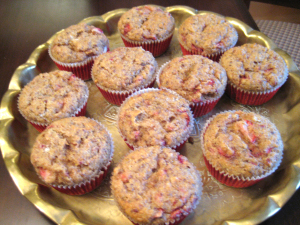“The problem with having an open mind, of course, is that people will insist on coming along and trying to put things in it.” – Terry Pratchett, Diggers
One of the most important things about doing anything new is to know what it is that you’re doing, and why. At least, that’s my opinion. That means you’ve got to keep an open mind and make sure that you’re putting the right information into it. Let’s face it, there is a lot of data out there about low-carb eating; and never mind all the conflicting facts we get blasted with if we dare look up other diets. I’ve put in that quote from Pratchett to make you think about what you read, hear, see… not all the information out there – and, hey, that includes this blog! – will be 100% accurate or suit your needs. There’s a reason why I keep telling you to check with your GP – not just covering my ass! 😉
So where should you look to get accurate information? How should you go about researching this? Well, honestly, I can’t speak for everyone here, but I just go to Google, type in a few keywords and use that as a jumping platform. I dive into a whole load of information and read, read, read. I take notes too, you’d think I was back at university – but what can I say, that’s just the way I work: find, read, notetake, digest, write. My IB English teachers would likely be upset with my waffling on in a lot of places – I am sorry, Mr. D, Ms. R – but I figure some of my uni professors won’t mind the new tone. But I digress…
Finding information. Where to start? Well, rather embarrassingly I tend to start my searches at Wikipedia – don’t freak out. Aside from the fact that Wikipedia isn’t exactly the most reliable source on the net – and indeed, those of you at uni will lose marks if you start citing it! – but I like to use it like a shotgun: it provides me with some terminology I can then look up, and, in addition, most of its articles come provided with a tidy little bibliography that allows for further research.
Which brings me to some key blogs that I like using – these are in no particular order, and they’re just a small sample, but they’re among the best ones I’ve found – for inspiration, motivation and information:
I breathe…I’m hungry is a fantastic blog run by Mellissa Sevigny, complete with a vast range of recipes – a large selection of which are low-carb – and a great collection of tips, guides, and eating plans. Mellissa writes in a witty, quick-flowing way that makes it enjoyable and easy to read her articles. She’s got a wide variety of recipes, ranging from sweet to savoury, which makes it a one stop shop for cooking inspirations. The menu/eating plans she publishes are extremely easy to follow and accessible to even the most rookie dieters amongst us. Take for example her entry on the Egg Fast Diet; a quick read will tell give you the cliff notes and all the information you need, all backed up by her own experiences with the plan itself. To be honest, I’ve yet to come across a better description of eggs and why they’re such awesome superfood for a LC diet.
Another site I like to visit is Holistic Squid. With a funky name like that you can’t really go wrong, but for further detail: this site is written by Emily, who believes in real food, healthy living and how those things go hand in hand. She’s got food plans, new ideas, and a great writing style. In addition, HS is also a great source for those of you with children or thinking about getting pregnant. It’s not strictly a ‘LC’ page or anything, but it’s a great source nonetheless.
And I’ll leave you with those two sites to look over. I’ll try to point out some other good ones as we go.
Clear Skies,
Vee


